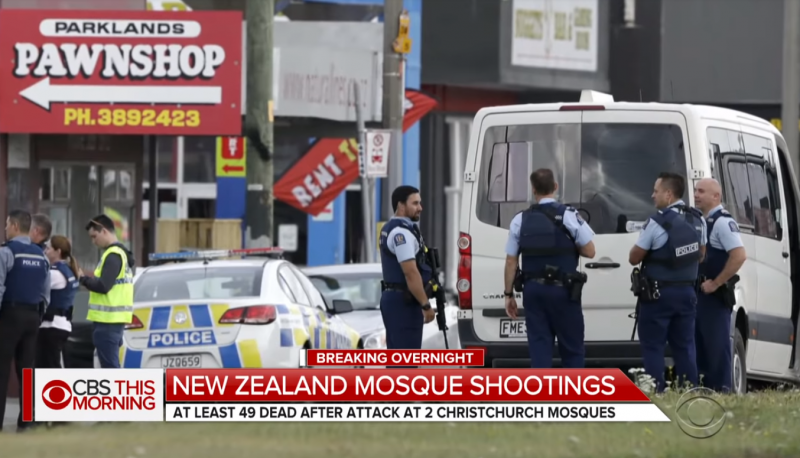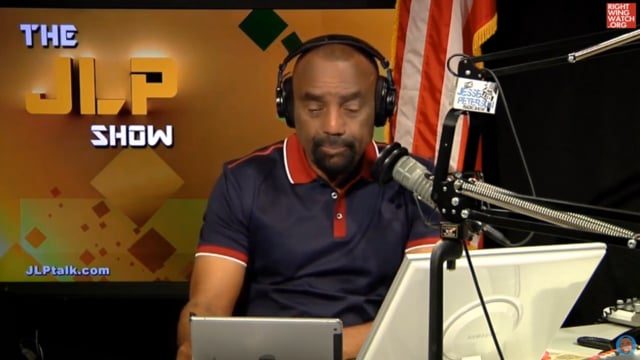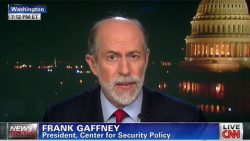It happened again.
News broke last night that 49 Muslims were killed and 20 were injured in two New Zealand mosques after a terror attack committed by a 28-year-old white supremacist. New Zealand authorities have arrested three people in connection to the attack.
The name that the primary killer used to identify himself on video leads to a small cluster of online content that provides clear indications that he was radicalized in extreme-right circles online, and hoped his attack would inspire more acts of violence by like-minded peers. The terrorist in New Zealand appears to adhere to the accelerationist school of extremism, which the Southern Poverty Law Center defines as one whose adherents “believe that violence, depravity and degeneracy are the only sure way to establish order in their dystopian and apocalyptic vision of the world.”
Yesterday’s massacre was designed for social media with the aim of building maximum capacity to go viral. Before he began his rampage, the gunman appeared to have shared links on the anonymous image board 8Chan—a regular host to some of the most violent and hateful content on the web. Those links directed viewers to a Facebook page where they could watch the attack happen in real time.
“Well lads, it’s time to stop shitposting and time to make a real life effort post,” a post by the alleged killer read. “I will carry out and attack against the invaders, and will even live stream the attack via [F]acebook.”
He painted his guns with white supremacist references and the names of other racist mass murderers. His vest had white supremacist iconography on it. And on Facebook Live, in front of a global audience that included this reporter, the shooter entered a mosque and savagely murdered practicing Muslims in an apparent state of utter calm while people on 8chan reveled in the attack.
“Godspeed Anon. Can’t wait to see the news reports,” a user replied.
Another wrote, “HAHAHAHAHAHAHA THEYRE FUCKING SPOOKED GENTLEMEN.”
Video of the attack spread across the major social media sites—Facebook, Twitter and YouTube— faster than moderators could keep up. Social media users passed around the killer’s linked manifesto, which is chock full of verbatim white supremacist and anti-immigrant propaganda, much of which was similar to that from U.S. sources, warning that Muslim immigrants were replacing white people in Western nations. The manifesto states the killer carried out his attack to send a message that non-white immigrants should live in fear “as long as the white man still lives.”
Parts of the manifesto read as a tribute to the “white genocide” conspiracy theories validated by the likes of President Donald Trump, Rep. Steve King, Fox News host Tucker Carlson, YouTubers Lauren Southern and Stefan Molyneux, and pockets of densely packed far-right communities online. Those conspiracy theories suppose that governments (and more often than not, Jewish leaders in particular) seek to eliminate white people from the face of the planet by either encouraging the migration of non-white people to majority-white nations, or by empowering non-white minorities already in their midst.
The manifesto also displays another telling trait of any too-deep internet user: “shitposting.” Bellingcat describes shitposting as “the act of throwing out huge amounts of content, most of it ironic, low-quality trolling, for the purpose of provoking an emotional reaction in less Internet-savvy viewers.” But in this case, the manifesto reads as if it were designed specifically to wreak chaos among less internet-savvy reporters.
The manifesto included references to video games and jabs at Candace Owens of Turning Point USA as being “too much” for the shooters’ taste. TPUSA is a mainstay on the boilerplate of ire for intensely radicalized young men online, who often allege that its spokespeople echo many of their same beliefs, but do so disingenuously because its leaders push out members who express their white nationalism too explicitly.
During his rampage, the killer in the video invoked the screen name of YouTube personality Felix Kjellberg, telling viewers to subscribe to “PewDiePie”—a trope helped popularized by right-wing media hoping to score an ally in their pursuits to gain cultural influence among young people. He played a song popular in deep right-wing subcultures meant to reference the genocidal murder of Bosnian Muslims.
As Southern Poverty Law Center investigative reporter Michael Edison Hayden pointed out: The logo on the cover of the killer’s alleged manifesto contained an image previously circulated openly on Twitter by the likes of former KKK Grand Wizard David Duke.
David Duke (@DrDavidDuke) was among the American white nationalists who promoted the meme that went on the cover of the apparent New Zealand manifesto.
Duke posted here it on February and wrote “Soon…” https://t.co/XU6WC7SDQP pic.twitter.com/F2eYgnuUXw
— Michael Edison Hayden (@MichaelEHayden) March 15, 2019
The killer’s ability to craft his attack for instant internet infamy underscores the grave seriousness of the failure of law enforcement and tech platforms to address hate-inciting online content and its enticement to violence, revealing complacency in the face of a political radicalization machine designed at its core to desensitize hateful young white men and turn them into psychopathic killers. The radicalization networks that span across continents are bridged online.
This happened before when an anti-Semite massacred 11 people in a Pittsburgh Synagogue. This happened in 2017 when a young man killed six people in a mosque in Quebec City. It happened in 2015 when a young man walked into a house of worship and slaughtered African-American churchgoers. This could have happened in Washington, D.C., last year but the FBI stepped in to arrest a neo-Nazi who was stockpiling weapons after his like-minded brother committed suicide.
And unless something changes, it will happen again.









